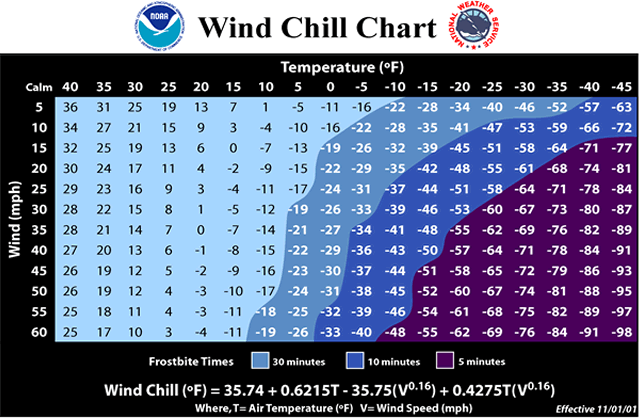How to prepare for Borderland cold snap
EL PASO, Texas - Temperatures won't make it out of the 40s on Thursday, and overnight temperatures will bottom out in the middle to low 20s across the Borderland. That means it's time to learn about cold weather preparedness! If you watch ABC-7 meteorologists, you have probably heard of Protecting the 4 Ps. The Ps stand for pipes, pets, plants, and people- each needs to be protected in cold weather.
Most importantly is to protect people. Protect yourself, your family members, friends, and others by covering up your skin as much as possible. When skin is exposed to the elements, particularly cold weather, you are at risk of getting frostnip or frostbite. According to the Cleveland Clinic, frostnip is when your skin becomes numb, tingly, and cold. It causes temporary skin damage and occurs whenever cold, and you are outside.
Frostbite is the more extreme version whenever temperatures do fall below the freezing mark. Frostbite becomes especially more likely when there is a wind chill. The National Weather Service defines windchill as to how cold people and animals feel outside due to the rate of heat loss due to the wind and cold temperatures. As the wind gets stronger, it is easier for heat to be released from your body, so the lower the wind chill temperature is, the more likely you are to get frostbite. You can look at the chart provided by that NWS that shows how fast you may experience frostbite according to the wind speeds and temperatures.

The next most important 'P' for many is your pets! While each pet has a different cold tolerance due to their fur coat, body fat, health or activity level, it is still best to keep your pets indoors during below-freezing weather. Pets are also susceptible to frostbite, so keeping them indoors may be a better option.
Next are your pipes. Whenever temperatures are below freezing, you'll want to protect them; however, once temperatures get below the 20 degrees Fahrenheit mark and for about 6 hours- that is when you want to keep them insulated. You can insulate outdoor pipes with materials such as foam insulation, towels, heating tape and more. For your indoor pipes, allow the cabinets they are in to be opened, which will allow the warmer air within your house to circulate them.
ABC-7 spoke with Frank Perry who has 35 years of plumbing experience and owns Sun City Plumbers. He said the three most common issues he has dealt with are burst pipes, irrigation systems, and gutter damage. He emphasized the importance of insulating anything that is exposed, and that wind is the real issue that may cause pipes to break.
Foam insulation is the most common insulator according to Perry, and he recommends cutting the ends off at 45 degree angles to allow the corners of the pipes to be insulated as well. For farmers, irrigation systems can become very costly if needed to be repaired. Perry explained the importance of having the main pipe shut off but the other spout that pushes water out open so any excess water can leak out.
Finally, the last thing to protect is your plants. For temperature-sensitive plants that can easily be moved (such as ones in freestanding pots), move them indoors, or at least inside your garage to prevent them from freezing. For sensitive plants planted in the ground, it is best to wrap them up with sheets, towels, blankets, or even tarps to prevent them from dying. It is also best to cover your plants before dark to trap in the heat they have collected through the daytime hours.
If you take these precautions whenever it gets cold, you should be able to keep yourself, your family, pets, and your household safe from any cold weather damage.
